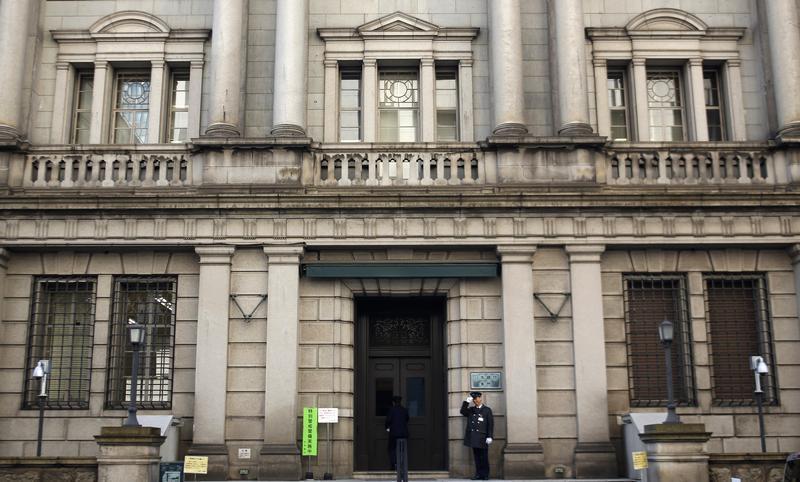TOKYO, April 30 —The Bank of Japan today held fire on expanding its stimulus programme despite tepid industrial production data and a recent sales tax rise that have fanned fears over the strength of the country’s recovery.
In a brief statement, policymakers said the decision was unanimous after wrapping up a one-day meeting, with markets now looking to comments from BOJ Governor Haruhiko Kuroda around 3:30pm local time.
The central bank is also set to release its semi-annual report on economic growth and prices, which will be seen as a key measure of whether the BOJ still thinks it can reach a 2.0 per cent inflation rate target by next year.
Kuroda has stuck to the ambitious timeline despite growing doubts among analysts, with many saying the BoJ will be forced to further expand its monetary easing to counter a downturn in the world’s number-three economy.
“While the Bank of Japan left policy settings unchanged today, we still think more easing will be announced in the second half of the year,” said Marcel Thieliant, an economist at London-based Capital Economics.
The BoJ’s price target — and the massive easing campaign launched last year — is a cornerstone of Japanese Prime Minister Shinzo Abe’s wider bid to drag the country out of years of deflation and slumbering growth.
After the BOJ’s last meeting on April 8, Kuroda — the former head of the Asian Development Bank, hand-picked by Abe to help steer his growth bid — said the economy was pushing ahead despite fears that the April 1 tax rise would dampen consumer spending.
However, fresh data earlier today showed Japan’s factory output rose a weaker-than-expected 0.3 per cent in March, and producers pointed to weakness over the coming months.
‘Worsening outlook’
The figures came after a 2.3 per cent month-on-month fall in February industrial production, highlighting an uneven recovery in Japan’s economy.
“The manufacturing PMI (purchasing managers’ index) suggests that output will fall sharply following the consumption tax hike,” Capital Economics said, adding that “the manufacturing sector had already lost momentum well before the sales tax hike kicked in”.
Producers were less confident as well, with a survey accompanying the data showing they expected factory output to shrink 1.4 per cent in April and inch up just 0.1 per cent in May.
However, over the January-March quarter, Japan’s factory output grew by 2.8 per cent, offering hope that overall economic growth will beat an “anaemic” reading in the last quarter of 2013, analysts said.
Japanese GDP growth “likely accelerated in the first quarter after the anaemic 0.2 per cent quarter-on-quarter gain in the fourth quarter, especially since private consumption should be particularly buoyant,” Capital Economics said.
“But the outlook has worsened.”
Analysts said firms adjusted their inventories well ahead of the tax hike to help cushion its impact.
Retail sales got a strong boost ahead of the levy hike — Japan’s first in 17 years — as shoppers made a last-minute dash to buy staples and big-ticket items such as cars and refrigerators.
The last time Japan brought in a higher levy in 1997, it was followed by years of deflation and tepid economic growth.
But “if we compare the current situation with the previous tax hike in 1997, companies are coping with the policy change better so manufacturing output and the economic trend should improve,” Yuki Endo, an economist at Hamagin Research Institute, told Dow Jones Newswires. — AFP






















